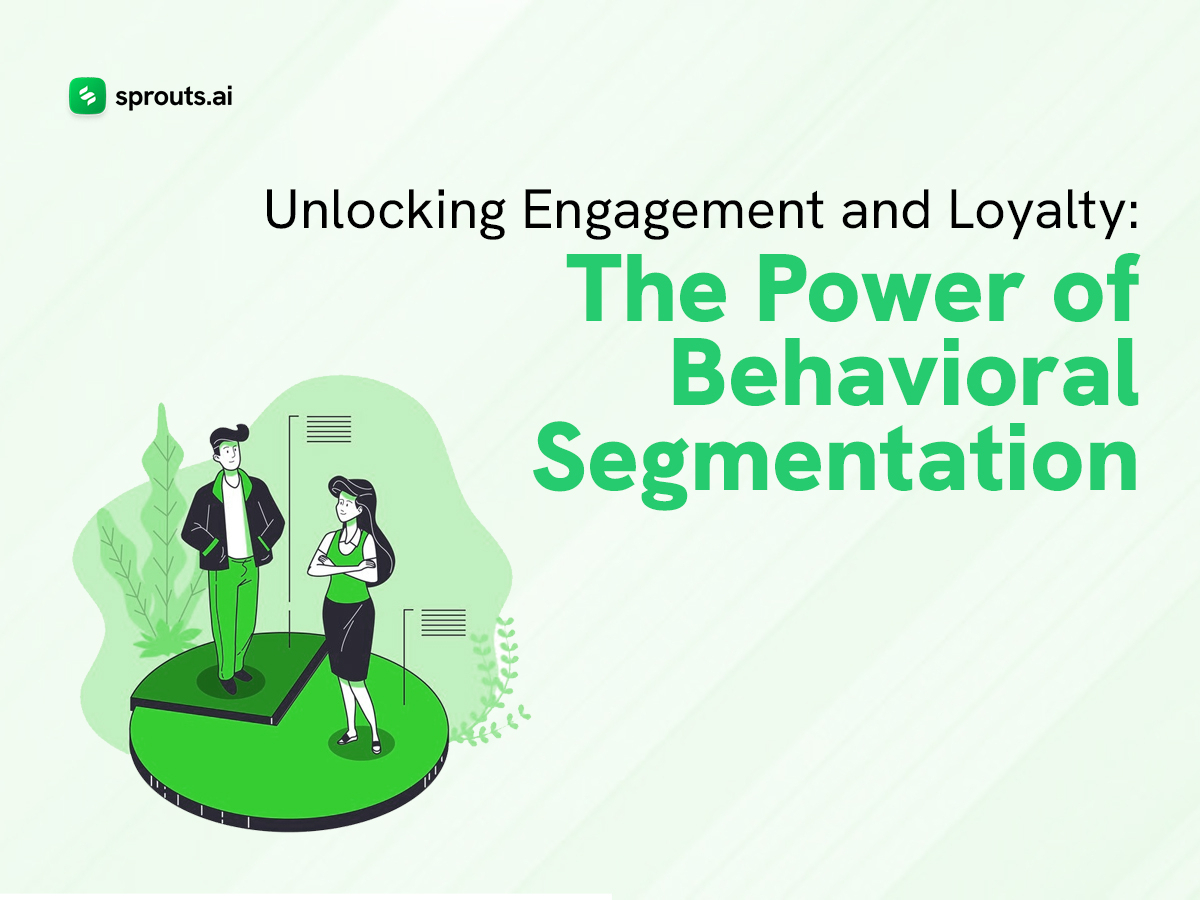Customer loyalty is the golden ticket to business success, but in today’s crowded marketplace, keeping customers engaged can feel like an uphill battle. Generic marketing blasts just don’t cut it anymore. What if you could segment your audience based on their actions and preferences, crafting messages that resonate on a deeper level? Explore behavioral segmentation – a powerful strategy that personalizes the customer journey and offers a treasure of benefits. This blog explores behavioral segmentation in detail, unpacking its core concepts, exploring its advantages, and outlining a roadmap for implementation. Let’s begin!
Understanding Behavioral Segmentation
Behavioral segmentation is about moving beyond traditional demographics and focusing on how customers interact with a brand. Instead of categorizing customers based on age, gender, or income, businesses analyze their behavior across various touchpoints, such as website visits, purchase history, social media interactions, and customer service inquiries. This approach allows companies to uncover meaningful patterns and trends that can inform targeted marketing strategies and personalized experiences.
The Benefits of Behavioral Segmentation
- Precision Targeting: By segmenting customers based on behavior, businesses can create highly targeted marketing campaigns. Rather than employing a one-size-fits-all approach, they can tailor their messaging and offers to resonate with specific segments, increasing the likelihood of engagement and conversion.
- Personalization: Personalization has become a cornerstone of modern marketing, and behavioral segmentation is instrumental in delivering personalized experiences. By understanding individual preferences and behaviors, companies can serve up relevant content, recommendations, and promotions, enhancing the overall customer experience.
- Improved Customer Retention: By identifying at-risk customers or those showing signs of disengagement, businesses can intervene with targeted retention strategies. Whether it’s offering special incentives, providing proactive support, or soliciting feedback, behavioral segmentation enables companies to address the unique needs of different customer segments, thereby reducing churn and fostering loyalty.
- Optimized Product Development: Behavioral segmentation provides valuable insights into customer preferences and pain points, which can inform product development efforts. By understanding what motivates different segments to purchase or engage with a product, businesses can prioritize features, enhancements, and innovations that are most likely to resonate with their target audience.
- Enhanced Customer Lifetime Value: By delivering personalized experiences and building stronger connections with customers, businesses can increase customer lifetime value (CLV). Loyal customers are not only more likely to make repeat purchases, but they also tend to advocate for the brand, driving referrals and contributing to long-term revenue growth.
Implementing Behavioral Segmentation
While the benefits of behavioral segmentation are clear, implementing an effective segmentation strategy requires careful planning and execution. Here are some key steps to consider:
- Data Collection and Analysis: The foundation of behavioral segmentation lies in data. Businesses must gather data from various sources, including transactional data, website analytics, CRM systems, and social media platforms. Once collected, this data needs to be analyzed to identify meaningful patterns and segments.
- Segmentation Criteria: Determine the criteria for segmenting customers based on behavior. This could include factors such as purchase frequency, average order value, browsing history, engagement with marketing campaigns, and more. The goal is to identify segments that are actionable and relevant to your business objectives.
- Segmentation Tools and Technology: Leverage advanced analytics tools and technology platforms to facilitate segmentation and automate personalized experiences. Whether it’s customer relationship management (CRM) software, marketing automation platforms, or machine learning algorithms, investing in the right technology can streamline the segmentation process and drive better results.
- Testing and Optimization: Behavioral segmentation is not a one-time exercise; it requires ongoing testing and optimization. Continuously monitor the performance of different segments and refine your strategies based on real-time feedback and insights. A/B testing, multivariate testing, and predictive modeling can help refine segmentation criteria and improve targeting precision over time.
- Cross-Channel Integration: Ensure that your behavioral segmentation strategy is integrated across all customer touchpoints. Whether customers are interacting with your brand through your website, mobile app, social media, email, or in-store, their behavior should be captured and used to inform personalized experiences across channels.
Behavioral segmentation empowers companies to move beyond demographic stereotypes and connect with customers on a deeper level. By analyzing how customers interact with their brand, businesses can deliver personalized experiences, targeted marketing campaigns, and tailored product offerings that drive engagement and foster loyalty.

